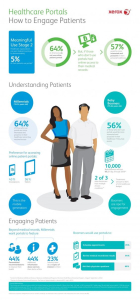Effective communication is the cornerstone of quality healthcare delivery. EMR software has emerged as a powerful tool that significantly improves communication among healthcare providers, patients, and other stakeholders. By digitizing and centralizing patient information, EMR software enhances collaboration, coordination of care, and information exchange in healthcare settings. In this blog, we will explore how EMR software improves communication and the numerous benefits it offers.
Seamless Information Sharing
EMR software enables seamless information sharing among healthcare providers within a practice or across different healthcare settings. With a secure and centralized electronic platform, healthcare professionals can access comprehensive patient records, including medical history, test results, and treatment plans. This eliminates the need for physical records or relying on information relayed through various channels, reducing the risk of miscommunication or errors. Improved access to accurate and up-to-date patient information facilitates effective communication and enhances the quality of care.
Real-Time Collaboration Through EMR Software
EMR software promotes real-time collaboration and communication among healthcare providers, enabling them to work together efficiently. Features such as secure messaging, shared calendars, and electronic referrals facilitate instant communication and coordination of care. Healthcare professionals can exchange messages, share updates, and collaborate on treatment plans, ensuring that all involved parties are well-informed and can make timely decisions. Real-time collaboration minimizes delays, enhances care coordination, and ultimately improves patient outcomes.
Efficient Referral Management
EMR software simplifies and streamlines the referral process, improving communication between primary care providers and specialists. With integrated referral management functionalities, healthcare professionals can electronically send referrals, attach relevant patient information, and track the referral status. Efficient referral management ensures that critical patient information reaches the appropriate specialist promptly, reducing wait times and improving continuity of care.
Patient Engagement and Communication
EMR software enhances communication between healthcare providers and patients, fostering patient engagement and participation in their own care. Patient portals and secure messaging features allow patients to access their health records, review test results, request prescription refills, and communicate with their healthcare providers. This direct line of communication improves patient satisfaction, empowers individuals to actively manage their health, and strengthens the patient-provider relationship.
Telemedicine and Remote Consultations
EMR software has become instrumental in facilitating telemedicine and remote consultations, especially in recent times with the increasing demand for virtual healthcare services. Through integrated telehealth functionalities, healthcare providers can connect with patients remotely, conduct virtual visits, and exchange information securely. EMR software enables the sharing of patient data, images, and test results during these virtual encounters, ensuring effective communication and delivering care beyond the traditional in-person setting.
Enhanced Care Coordination Through EMR Software
Effective communication is essential for seamless care coordination, particularly in complex cases involving multiple healthcare providers. EMR software improves care coordination by enabling secure data exchange and facilitating communication among different providers involved in a patient’s care journey. This includes specialists, primary care physicians, nurses, pharmacists, and other members of the healthcare team. Enhanced care coordination results in better transitions of care, reduced duplication of tests or treatments, and improved patient safety.









